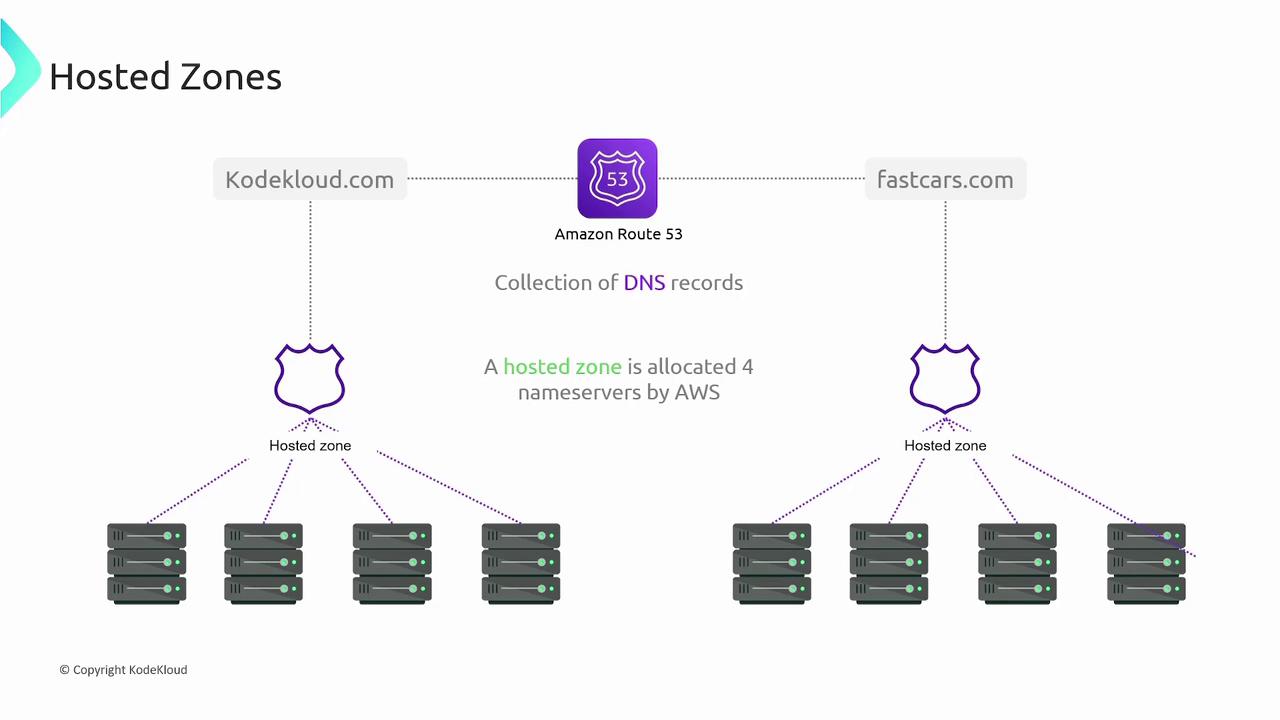AWS Solutions Architect Associate Certification
Services Networking
Route 53
In this lesson, we explore AWS Route 53, a fully managed domain name service (DNS) provided by AWS.
What Is Route 53?
AWS Route 53 is a robust and scalable DNS service that facilitates several critical functions:
- It acts as a domain registrar, allowing you to purchase domain names much like popular services such as GoDaddy and Namecheap. For example, you can register a domain like KodeKloud.com directly through Route 53.
- It manages all DNS records for your domains, so once you register a domain, you can easily configure its DNS settings within Route 53.
- Being a global service, Route 53 is not limited to a single region, ensuring worldwide accessibility.
Hosted Zones
A fundamental concept in Route 53 is the hosted zone. A hosted zone is a container for all the DNS records associated with a specific domain (e.g., KodeKloud.com). When you create a hosted zone:
- AWS reserves four dedicated name servers for that domain.
- For any additional domain, such as fastcars.com, AWS allocates another distinct set of four name servers to manage its DNS records and rules.

Key Highlights
- AWS Route 53 functions as both a DNS service and a domain registrar.
- It delivers global coverage and is not confined to any specific region.
- Hosted zones provide a structured environment where each domain receives four dedicated name servers for optimal DNS management.
Summary
- AWS Route 53 is a fully managed DNS service and domain registrar.
- It operates at a global level.
- Hosted zones are collections of DNS records for specific domains, with each hosted zone having four dedicated name servers reserved by AWS.
In the next section, we will provide a demonstration to illustrate how to set up and manage hosted zones effectively.
Watch Video
Watch video content